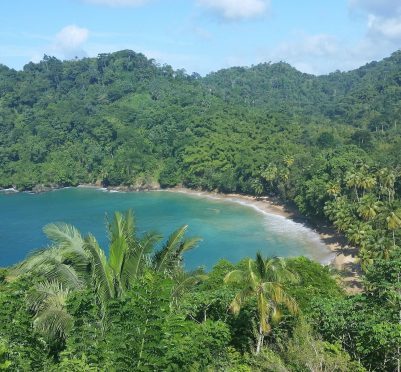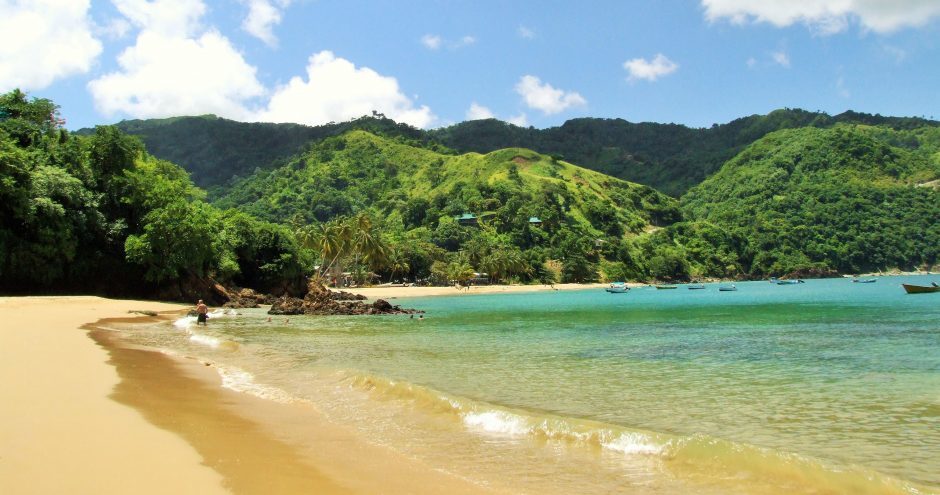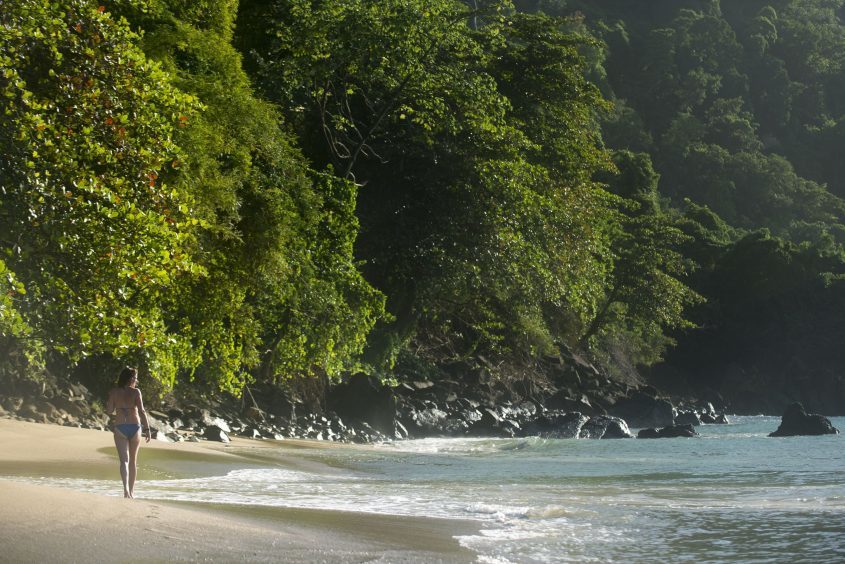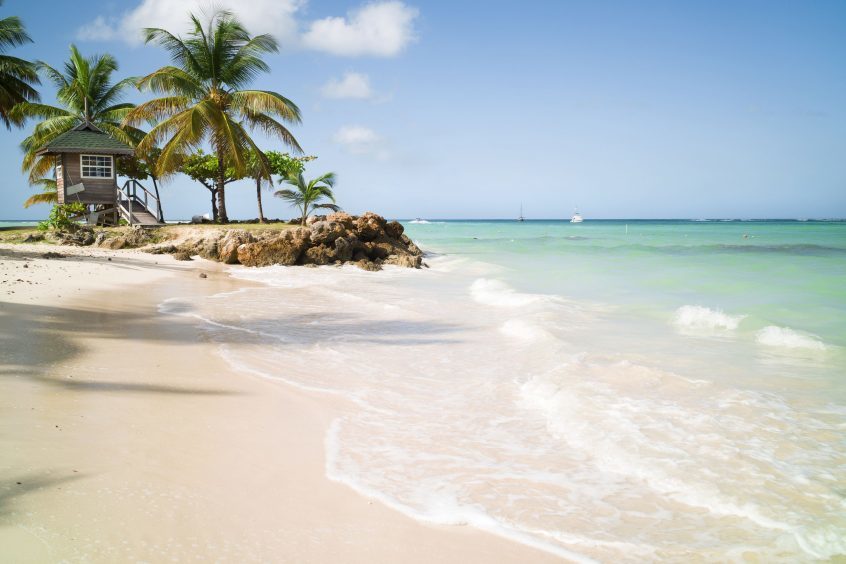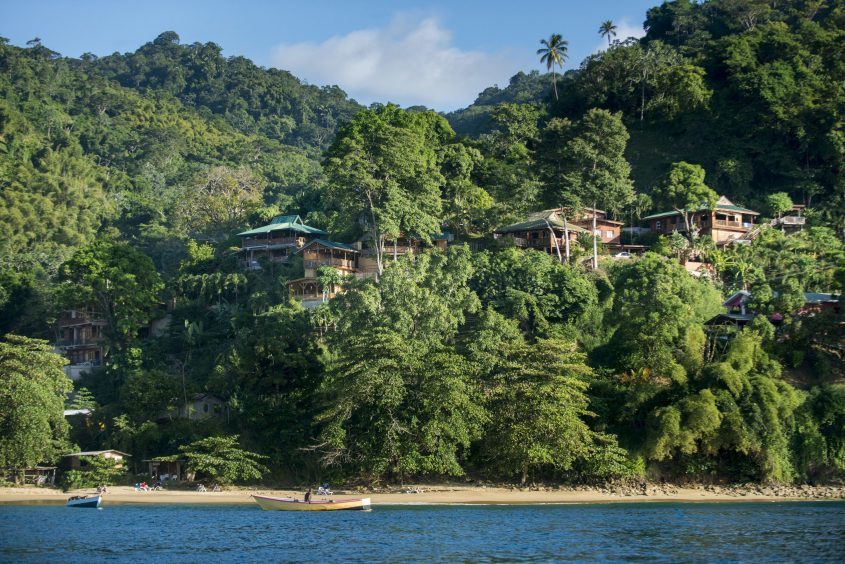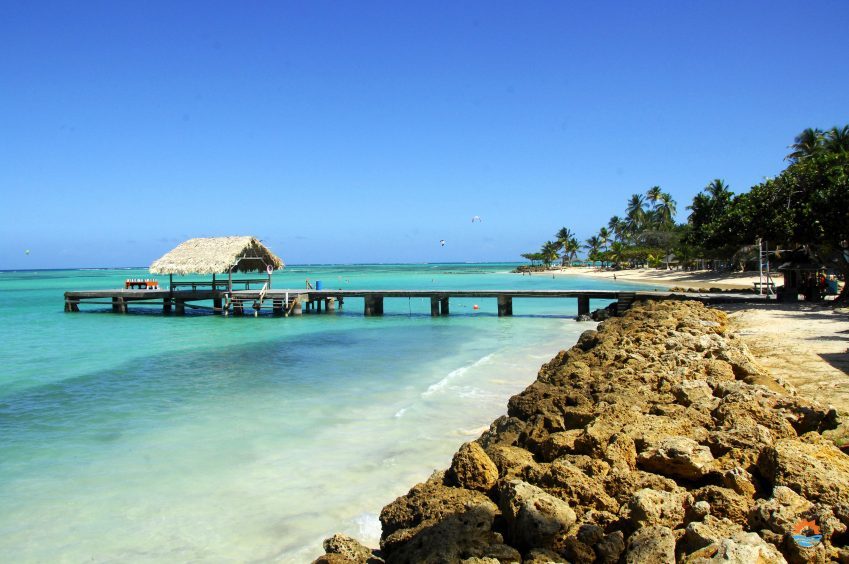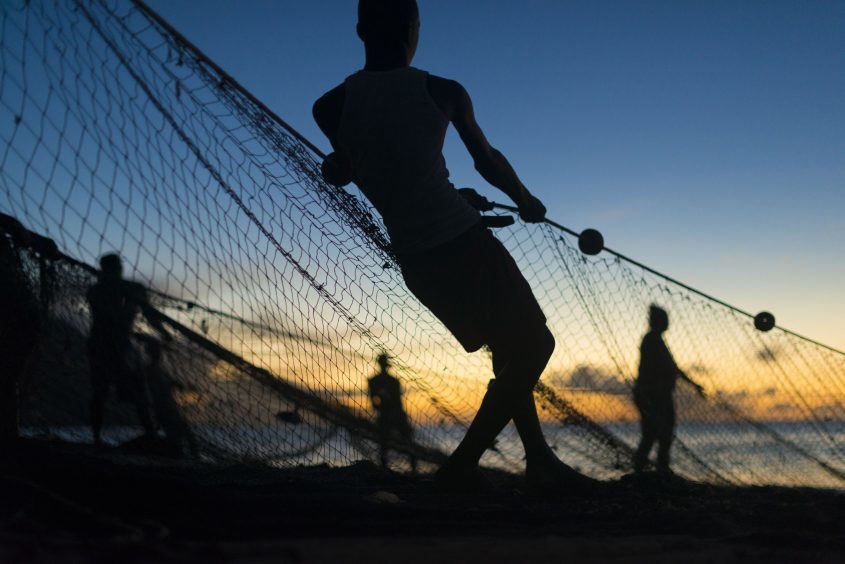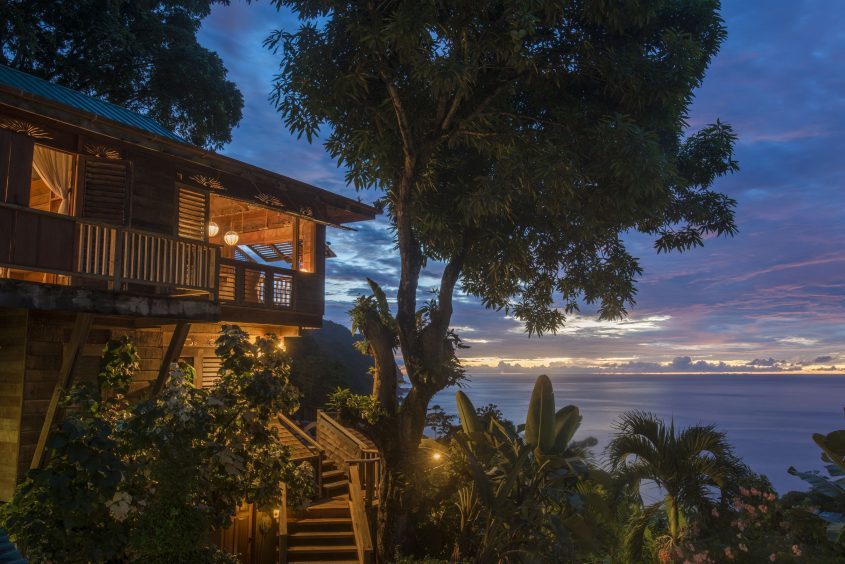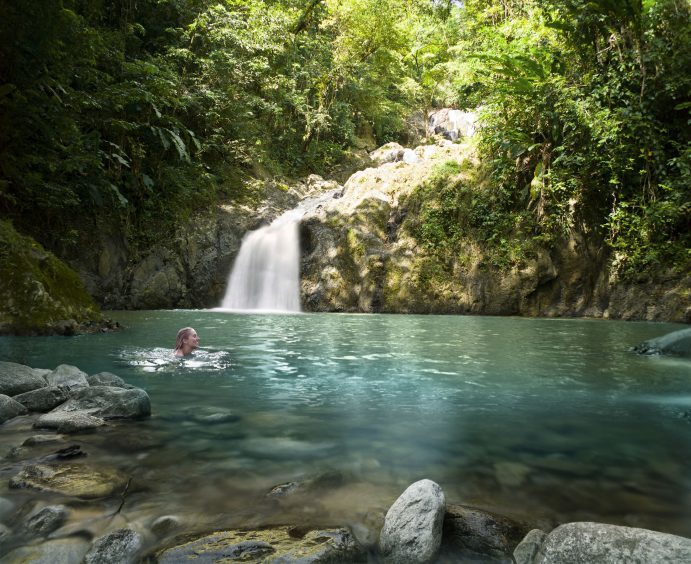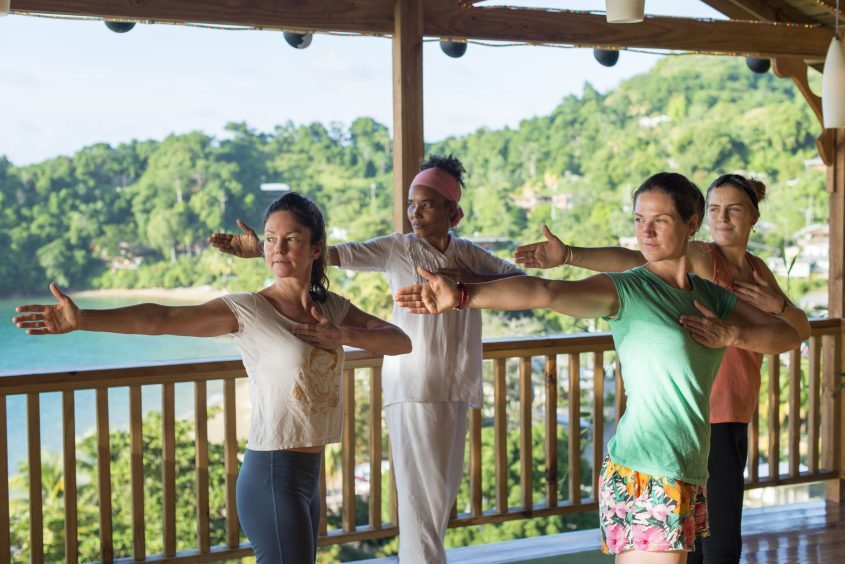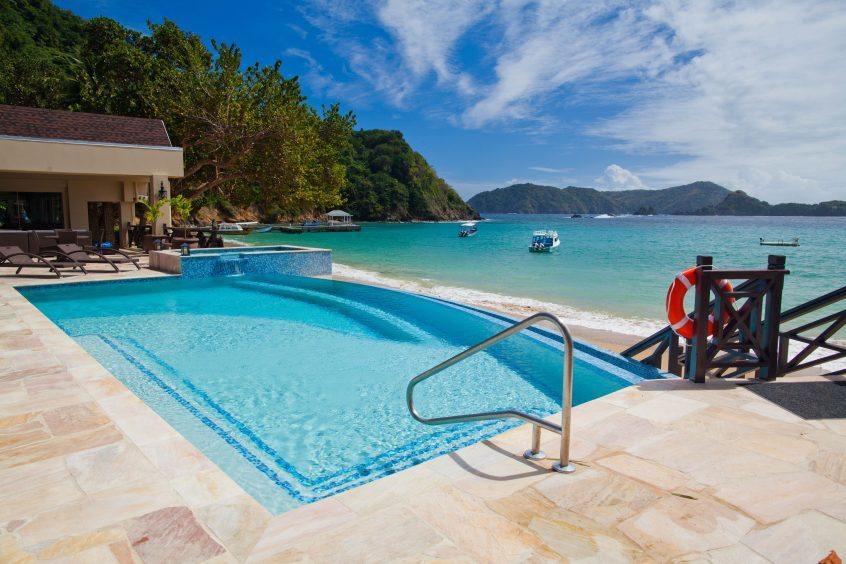For an island that’s named after the stuff, Tobago is short on good tobacco. I’m drifting through the shops in the lush coastal hamlet of Castara, hoping to find something other than the dreaded red Du Maurier packs.
My search takes me up into the hills that enclose the village, where the houses thin out and give way to tropical foliage. I pass tethered goats, bamboo thickets and drooping rain trees, eventually stopping beneath a squat white Methodist church on a hilltop. My eyes take in the kaleidoscope of chlorophyll around me: lime yellows, grass greens, deep viridians – and, in a gap between the leaves, the dark sparkle of the sea. I feel calm; I no longer need the cigarettes.
This is my first time in the Caribbean. I’ve come to unwind. Tobago has built a burgeoning tourism industry around its image as a mellow alternative to its busier neighbours. Showy resorts and tacky clubs are scarce; beaches are unspoiled; nowhere does tourism threaten to overwhelm the community. Everything is on a manageable scale.
The novel idea that you can enjoy yourself in a foreign country without infuriating the locals, upsetting their economy and wrecking their environment, which finds expression in the concept of sustainable tourism, is taking off here. And I’m spending some time within one of the pioneers of the trend on the island: Castara Retreats, a fetching cluster of wood-built lodges set among the village’s hills.
I’m put up in the Fisherman’s Lodge, which used to be just that, before owners Steve and Sue bought and repurposed it as a sleekly furnished guesthouse. Over a daiquiri on the Retreats’ terrace bar, Steve – a bluff Welshman who looks like a slighter, sun-kissed David Bowie – lays out his creed: he aims to draw, as far as possible, on what’s already there, such as local services and the island’s natural resources. The Retreats should be integrated into Castara’s community, not imposed on it.
Steve combines a forthright pragmatism with a keen interest in the people around him. Before long, he’s worked out that I’ve never been fishing, and decides to do something about it.
The pace of the days in Castara may be slow, but it picks up in Steve’s motorboat. He and his stepson, Callum, are taking me out to sea. I unspool my fishing line, lean back and study the swiftly passing coastal scenery, occasionally pausing to reel in a bonito.
As our catch count climbs, the view shifts from the outer reaches of Castara’s cove to tree-capped rocky outcrops, then to white sand. We’ve reached Cotton Bay, a honeymoon-perfect beach with nobody on it – our lunch spot. The beach is inaccessible by road; we are alone with the lizards and pile of freshly caught bonito.
Tobago abounds in impossibly romantic hideaways. Cotton Bay is one of a score of secluded beaches peppering the coast. From these, one spies mysterious outlying islands.
The view from my room at Blue Waters Inn, a tranquil seaside hotel where I spend a few nights en route to Castara, takes in Goat Island, on which stands a solitary house that may or may not have belonged to Ian Fleming (nobody’s quite sure).
Behind it, Little Tobago – an uninhabited birdwatcher’s paradise – lowers on the horizon. Then there’s Tobago’s dense Forest Reserve, the oldest forest conservation zone in the western hemisphere (est. 1776), and home to a delightful array of flora, fauna and purling waterfalls.
I meet tour guide Harris McDonald, a great trunk of a man, outside my lodge. “Time is of the essence,” he booms, clapping my shoulders – and with that most un-Caribbean of phrases, we’re off.
As he drives us to the forest, he talks. He jumps between anecdotes about the colonial powers’ adventures in Tobago and stories of his personal conquests on its beaches, as if they’re all part of one grand historical narrative. I can’t get a word in edgeways.
But when we park the car and walk into the forest, its effect on Harris is sudden. He stops talking, except to point out gold-chested birds and silver-winged butterflies in hushed tones.
With his machete, he carves a path through the undergrowth beside the Goldsborough River, the cracking of the falling branches punctuating the steady babble of the water.
By the time we reach the remote Twin Rivers Waterfall, sploshing into a clear pool wide enough for swimming, that familiar island peace is upon us.
The sun sets early in Tobago. Back at the Retreats, the guests gather at the bar for their sundowners, while hummingbirds flock to the feeders that ornament the terrace. Here, the resort’s manager, Porridge – so called because he couldn’t stop eating the stuff as a kid – is holding court.
He flashes me a grin and hands over a shot of rum, topped up with a lime cordial served by Tillie, the bar’s resident mixologist.
I marvel at Porridge: he’s spent the day delegating work, receiving guests, bartering with fishermen and guiding tourists around the village’s scenic spots, but his energy is undiminished.
It’s fitting that a man who knows everyone in Castara manages the Retreats, for this is the most convivial of resorts – the sort of place where all the guests will have met, shared a drink and an in-joke or two, by the end of their stay.
I’m tipsy by the time my driver takes me over to Pigeon Point, Tobago’s westernmost tip. I’ve signed up for what’s mysteriously billed as a “night bioluminescence tour”.
Guided by Brett, a peppy Ryan Gosling lookalike with a volatile American-Trinidadian accent, we paddle out from the shore into the dark. Half an hour in, my arms aching and my head throbbing with half-digested rum, I’m ready to pack it in – when Brett cries out: “Look!”
In the water, my paddle has become studded with sparks of blue-white light. This “bioluminescence”, Brett explains, is produced by marine plankton, which glow when agitated. As we approach the mangroves, the sparks multiply, rallying around my arms and feet as I dip them in the water. We are now so far from the shore that this is the only light I see. I feel as if I’m trailing my limbs through the night sky.
The sun also rises early in Tobago. On my last day, I get up at dawn and head to the beach, where the local fishermen are casting a net the size of Belgium in the bay. I watch them scan the waters for fish and adjust their huge mesh.
The scent of baking wafting over from behind me announces that the bakers of Castara have fired up their clay oven. I head into the village, passing the convenience store, with its stacks of Du Mauriers, and Cheno’s Cafe, where guests from the Retreats sit sipping juice with Porridge.
Faces grown familiar pass me on the way, and we nod good morning. The cicadas are stirring; I walk up to join them among the trees in the hills. And from there I see it all below me in the brightening air: the houses, the people, the white sand and the dark sea beyond, all calm.
Once more, Tobago is working its charm – the clamour of city life has never seemed further away.
- Alex Dudok de Wit was a guest of Visit Tobago (www.visittobago.gov.tt). Doubles at Castara Retreats (www.castararetreats.com) start from £80 with breakfast; doubles at Blue Waters Inn (www.bluewatersinn.com) start from £140. British Airways (www.ba.com) fly from London Gatwick to Tobago from £495 return.
